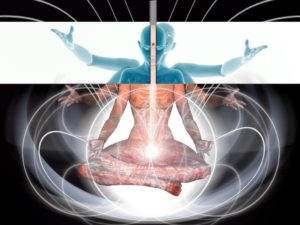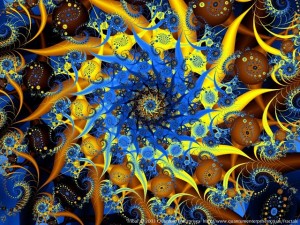 Usually, during political debates, I’m asked if there is a way to use psychoactive substances with a relative certainty of “not being hurt”.
Usually, during political debates, I’m asked if there is a way to use psychoactive substances with a relative certainty of “not being hurt”.
In a provocative tone I could answer: yes, there is a way of not being hurt with substances, of not having to pay too high a price for having played by opening “the doors of perception”: this way is not using them…
Beyond provocations and jokes, I’m deeply sure there is a wise way of using these substances, and I’m also deeply sure that the common method, except for inevitable exceptions, is rather thoughtless, demential or at least too much hedonistic and mercantilistic to be considered wise.
So I would like to submit to you some factors to be considered if you want to use psychedelics, at least in a less harmful way, even if not in a beneficial way. I think you all know these factors, but I also think it is worth to repeat them, hoping that a best knowledge of these issues can help to create a cleverer relationship with substances.
The first element, the one known by everybody as the essential one in determinating the quantity of experience, is the so-called Set & Setting.
Set is the range of variables connected to the personality of a given person: his/her cultural and social background, his/her motivations and expectations, his/her psychological structure, his/her education, his/her emotional state; on the other side, Setting is the environment in which the experience takes place: the place, the environmental conditions, the people who participate or witness the experience, and so on. By changing the set or setting (or both of them) you will have, even with the same substance, a different result, some times even the opposite result.
The second element is a good knowledge of the substance you’re about to use, of its effects and pharmacodynamics, but also of the risks and dangers that may provoke. You also have to know and respect the right dosage in order to produce certain effects.
If a substance, let’s say for example MDMA, is active starting by 50 mg and gives its full effect around 120-150 mg, it would be nonsense to use 200 mg. of it: it’s just stupid!
And this brings us to the third element, that is the conscious use of a given substance.
From this point of view there aren’t “good” and “bad” substances. As for medicines and food, you can use all drugs correctly or abuse of them. For instance marijuana is maybe the most effective drug to treat glaucoma; LSD and other psychedelics like the well known MDMA or Ecstasy can be used with remarkable results in psychotherapy and in treating drug addiction. On the other hand, the use of currently essential medicines, like morphine in pain therapy, antibiotics and the trivial aspirin, could bring to considerable risks for health. If a given number of negative reactions would be the principle to prohibit a medicine, you can be sure that we won’t see neither a box of suppository for children on the stands of a pharmacy!
What do I want to say? Simply that the problem is not the use but the abuse. And for the abuse, apart from the law, there’s nothing you can do. There will always be someone who abuse of this or that substance, of this or that medicine, of this or that food.
One of the strong points of prohibitionists is that by repealing repressive laws we would immediately sink in an orgy of drugs use. Excuse me, but this is stupid.
Because apart from legalization or prohibitionism, all drugs are deeply and permanently ingrained in our culture, in our way of life. We are already dipped in legal and illegal drugs, available for everyone who wants to get them and who can afford them. The illegality of some of them only caused an explosion of criminal organizations and crimes that won’t exist without their illegality.
Of course, it’s possible that by removing these laws against drugs some frustrated housewife would try to snort a bit of cocaine, or that some shy bank clerk would try feel the thrill of a psychedelic “trip”, but generally the abuse of substances won’t be worse than the current one, and after a possible, but not certain, initial experimentation thing will come back to their natural balance.
I would like to conclude with an evaluation of the so called “drug problem” in a psycho-anthropological key. The purposes and uses of chemical substances that can modify the state of consciousness from traditional societies and industrialized countries are very different, and so are different the ways in which these substances are felt and their effects.
 In the tribal and pre-industrial world, hallucinogenic plants are “holy plants”; they’re considered in the same way as living creatures with supernatural qualities, capable of providing some designed persons – shamans – a kind of bridge on the abyss that divides this world by the divine world. In these societies they believe that these plants are essential to the well-being of the individual and of the community; the visionary experience, the concepts which culturally derives from it and which determines the interpretation are totally coherent with the philosophical, religious and ethical traditional systems; these, in their turn, increase the value and even encourage the personal approach with supernatural forces and the way of facing them.
In the tribal and pre-industrial world, hallucinogenic plants are “holy plants”; they’re considered in the same way as living creatures with supernatural qualities, capable of providing some designed persons – shamans – a kind of bridge on the abyss that divides this world by the divine world. In these societies they believe that these plants are essential to the well-being of the individual and of the community; the visionary experience, the concepts which culturally derives from it and which determines the interpretation are totally coherent with the philosophical, religious and ethical traditional systems; these, in their turn, increase the value and even encourage the personal approach with supernatural forces and the way of facing them.
Archeology has shown that all the communities that still use hallucinogenic plants have been doing it for centuries. That’s why we can declare that “holy plants” contributed to generate the history of culture, because it’s exactly in the visionary experience that the individual asserts in front of himself the value of tribal tradition that was handed on from father to son. Holy plants are needed to give value and to make a culture real, never to give a temporary desire to escape from it all.
A Mexican shaman once said to an American anthropologist that Huicholes take peyote to learn how to become really Huichole. LSD, mescaline, psilocybin or whatever, are used in Western countries for very different aims rather than “learn to become” Italian, French or American…
Why the same substances have so different effects in different cultural environments?
Why some people consider them like sacred, benign and essential since centuries, while other people consider them so “evil” and “harmful” that the only fact of possessing them is a serious crime?
It’s obvious that the variable is based on society, and not on the chemical structure of these substances.
It’s the culture and its stereotypes that make a social drug – alcohol – legal and morally acceptable and another drug – cannabis – unacceptable, not certainly their chemical characteristics. Drugs that cause physical addiction, like heroine, are very different from the ones that don’t cause addiction, but are all included in the same legislative table…
A drug problem will always exist as long as everybody (people, consumers, researchers, lawmakers, till the last cop) accepts a vision that combine biology and anthropology, pharmacology and psychology. And as long as a drug problem exists, the abuse of certain substances will not yield neither to the most repressive laws nor to the most massive budget for “rehabilitation”…
If my opinion was groundless, then why are we more worried about cannabis rather than about the effects of nicotine?
Without underestimating the gravity of the problem of Ecstasy, actually popularized by the media, why are we more worried about a substance that affects a globally low percentage of individuals rather than about the really massive proportions reached by alcohol abuse?
And if it’s true that the social and personal damage of heroine is very high, strictly connected to criminality, robberies and prostitution, it is also proved that exists a very strict correlation between alcohol, homicides and children violence, with a social cost extremely higher than the one imputable to heroine…
Only if we start by these data, I guess, we can open a serious and constructive debate without hysterical fits: leaving behind empty and moralistic talks we could begin a completely radical talk, that would involve the entire social and economical system in which we have to leave everyday, and at the same time it would consider the new dimensions of consciousness and pleasure.
If an ever-growing number of people will recognize the positive value of the altered states of mind, then even the means to obtain these “altered states” will be considered “normal” by everybody, and not things just related to “uncivilized people”, “hippies”, “depraved persons” and all the ones who want to escape from everyday reality.
GILBERTO CAMILLA
Psychoanalyst, President of the Italian Society for the Study of the States of Consciousness (SISSC), Scientific Director of the magazine Altrove
Published on Dolce Vita International 1




